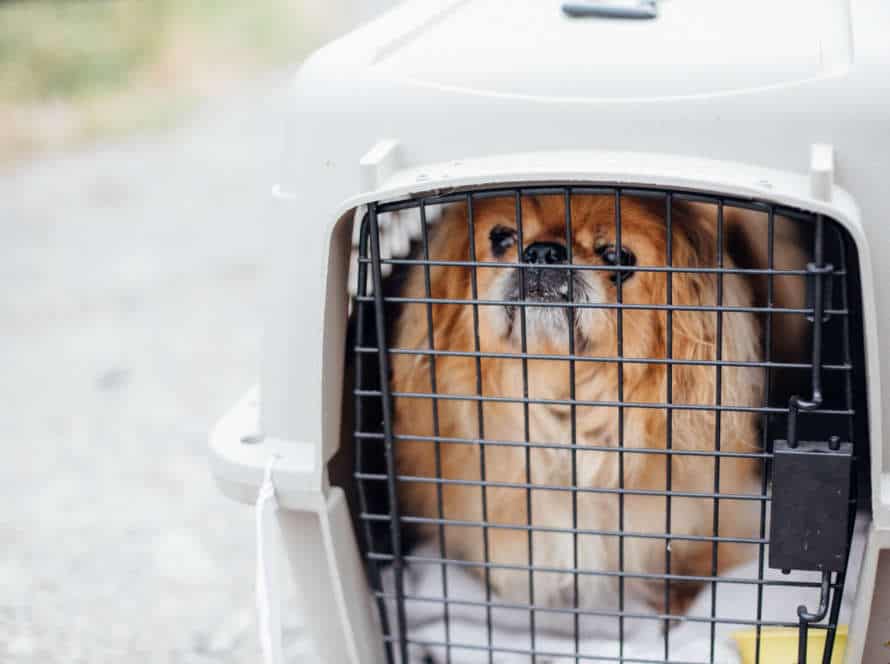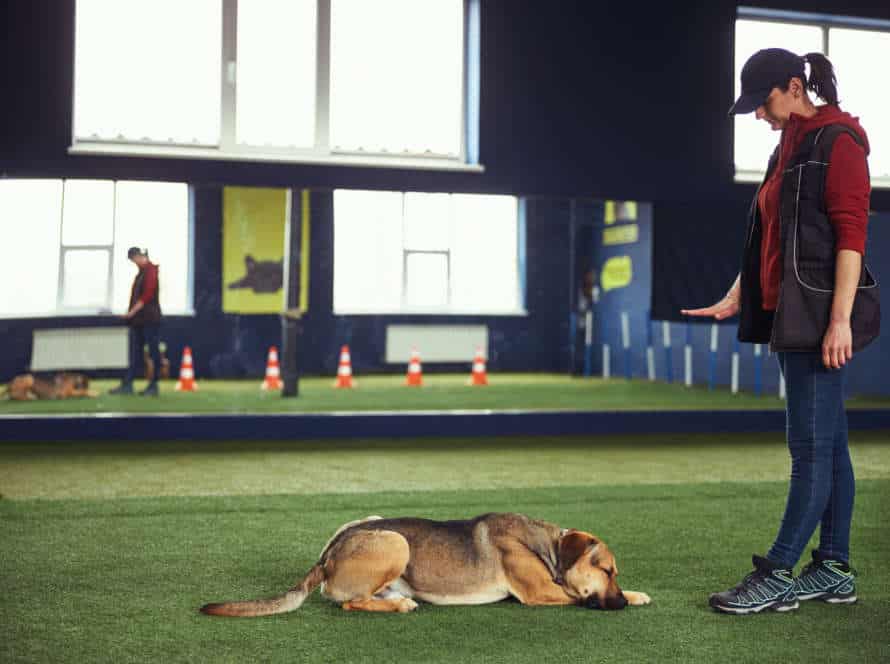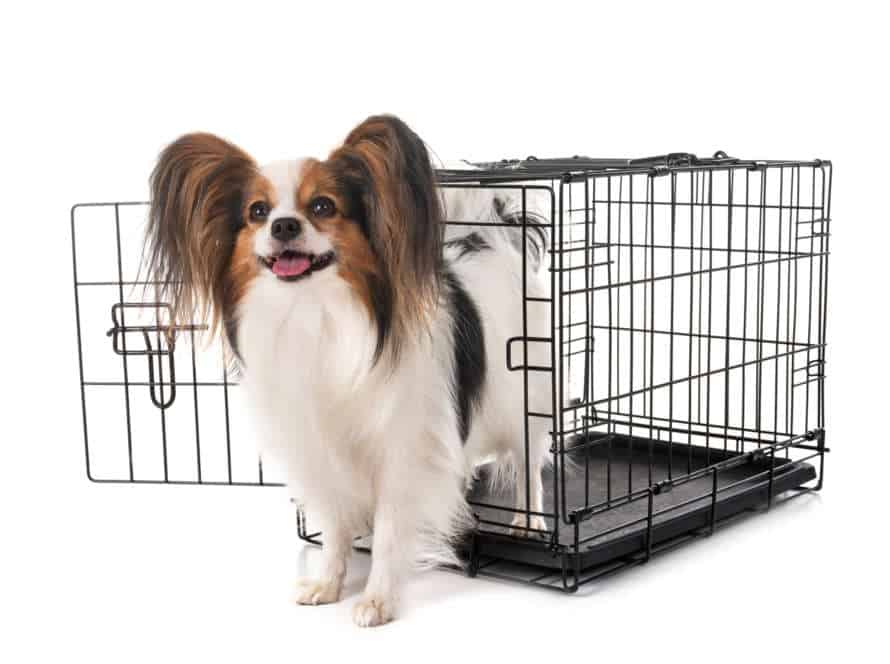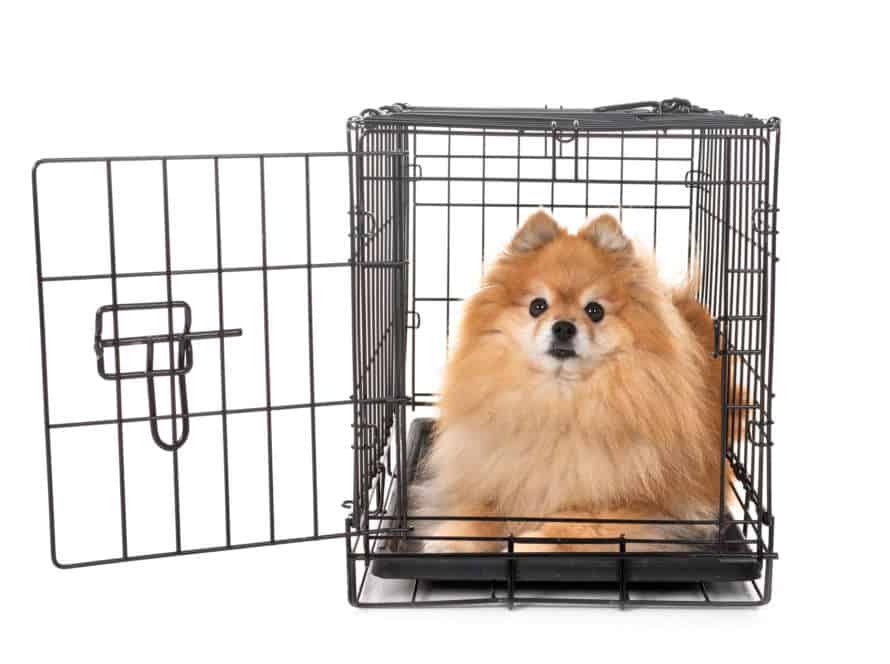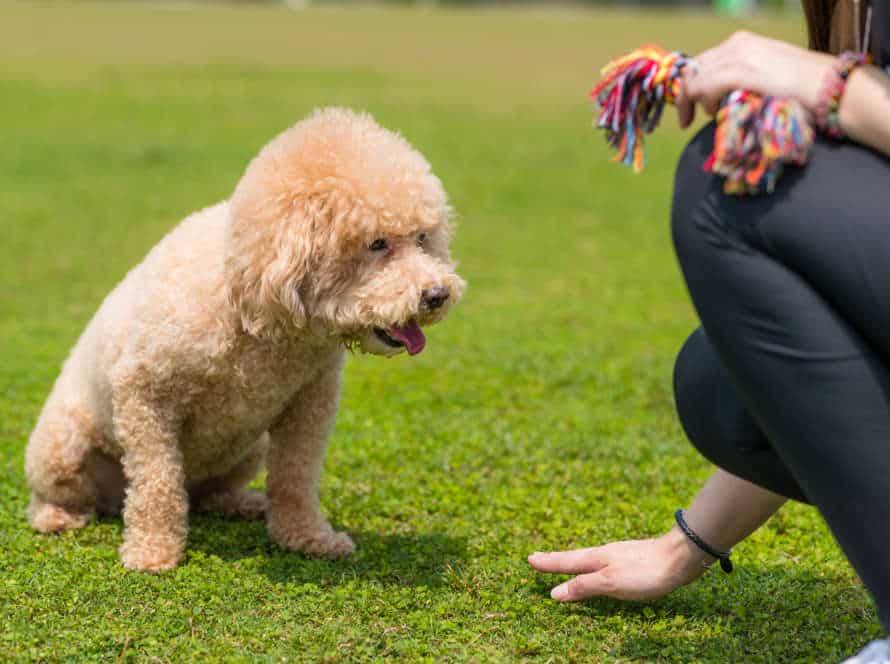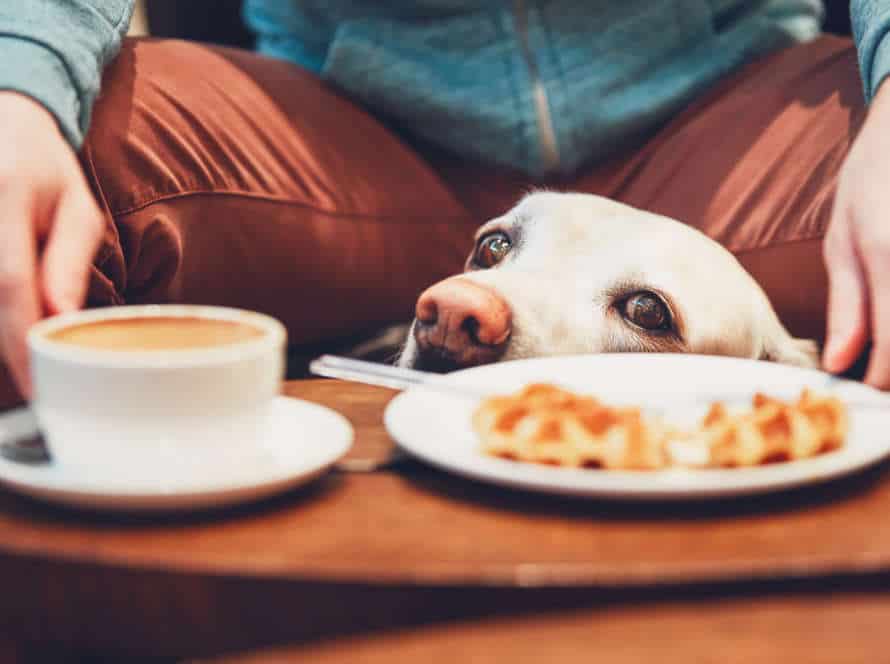Understanding Your Dog’s Anxiety
Crate training can be tough for anxious dogs. It’s hard to witness if you think your pup is anxious, scared, or overwhelmed. To assist them in succeeding, understanding the anxiety is the key. Let’s look at several ways you can get it and help your anxious pup beat their crate training troubles.
Signs of Anxiety in Dogs
Anxiety in dogs is a common issue. Causes can include fear, aging, or bad nutrition. Here are signs to watch out for:
- Pacing, restlessness, panting
- Shaking or trembling
- Chewing furniture or shoes
- Excessive barking, howling, or whining
- Decreased activity level, no appetite.
Address your dog’s anxiety ASAP. Crate training can help, but anxious dogs may struggle. Tips to help them:
- Introduce the crate gradually
- Leave treats and toys in it
- Let your dog enter it on their own
- Increase time in the crate, reward good behavior.
Patience, understanding, and consistent training, can help anxious dogs overcome crate struggles. So they can live a happier life.
Causes of Anxiety in Crate Training
Crate training can be great for housebreaking your pup, but it may lead to anxiety in some dogs. Why might your canine have anxiety with crate training? And how can you help them?
- Separation anxiety: Dogs with separation anxiety may get stressed in small spaces, like a crate. To make it easier, do crate training slowly, starting with short times, and increasing the periods gradually.
- Fear of being trapped: Fearing being trapped could cause tension in a crate. To make it more inviting, put cozy bedding, toys, or treats inside, and keep the door open.
- Lack of socialization: Dogs who haven’t had much socialization or training may feel anxious in a crate. To help them, invest in training and socialization, and make crate training a positive experience with rewards and patience.
Approaching Crate Training for Anxious Dogs
Crate training can be a great way to help anxious pups feel more secure and content in their surroundings. But, it can be a challenge for some pooches. To aid them in overcoming this struggle, understanding their apprehension is vital. Here are some tips to make the process a little easier:
- Let them slowly investigate the crate, encouraging them with treats.
- Move slowly and calmly to avoid scaring them.
- Let them choose to enter the crate without forcing them.
- Make the crate inviting by providing proper bedding, toys, and treats.
- You could use pheromone sprays or natural calming aids to help ease their stress.
Pro tip: Consistency and patience are the keys to success with crate training. Maintain a regular routine and reward them for positive behavior to help them adjust to their new environment.
Preparing Your Dog for Crate Training
Crate training can help your pooch settle into a new residence or feel at ease with travelling. Plus, it guarantees that a nervous pup won’t hurt themselves or wreck furniture when you’re not around. But, training an anxious dog is difficult, especially if they resist the idea of being in a crate. To make sure the experience is advantageous for both you and your pup, prep your pup for crate training.
Gradual Introduction to the Crate
Gradually introducing your pup to the crate can make the training smoother, if they have crate anxiety.
-
Start by placing the crate in a familiar area, like the living room or bedroom.
-
Leave the door open and pop some treats or a soft blanket inside to encourage exploring.
-
Once they’re comfortable, try feeding them meals inside with the door still open.
-
Then, start closing the door while they eat and gradually increase the time.
-
If they show signs of anxiety, slow down the process and go back a step.
-
Remember to praise and reward them for progress. Use positive reinforcement, like treats and verbal cues.
Crate Placement and Timing
Where you place and when you introduce a crate can help with successful crate training for dogs with behavior or anxiety issues. Follow these tips:
- Placement: Pick a serene spot in your house where your pup feels safe. Stop the crate from being in a place where it may feel lonely (e.g. basement or garage). Consider putting it around people-filled areas, like a lounge or bedroom.
- Timing: Introduce the crate gradually with treats and compliments. Start with short times in the crate (e.g. 10-15 minutes) and increase it as the pup relaxes. Don’t use it as punishment or lock the dog in for long periods. With persistence and consistency, crate training can be a positive experience for both you and your pup.
Familiarizing Your Dog with the Crate Environment
Familiarizing your pup with their crate is a must before starting crate training. Especially for dogs who may feel scared of small, enclosed spaces.
Here’s how to make them feel at home:
- Introduce the crate slowly, with treats or toys to encourage investigation.
- Say a command like “crate” or “kennel” to link the crate with pleasant experiences.
- Feed them near or inside the crate to keep it linked to enjoyable things.
- Increase the amount of time they spend in the crate gradually. Start with a few minutes and build up.
- Be patient and reward them if they show any fear or struggle with crate training.
Remember: Always move at their pace and keep their comfort in mind.
Techniques for Managing Your Dog’s Anxiety in the Crate
Dogs feel anxious, just like us humans. Therefore, appropriate crate training is key for them to be at ease. If your pup is scared of the crate from the beginning or you see signs of distress after some time, there are many strategies you can try.
Here, we’ll explore some of the main methods to help your anxious pup be more comfy in their crate:
- Positive reinforcement training: Rewarding your dog with treats and praise for going into the crate and staying there.
- Gradual exposure: Introducing your dog to the crate slowly and in short intervals to get them used to it.
- Creating a cozy environment: Placing familiar toys, blankets, or clothing items near the crate to make it feel more like home.
- Calming aids: Using calming aids such as pheromone sprays, natural remedies or anti-anxiety medication as directed by your veterinarian.
Positive Association with Crate Space
Establishing a good relationship with crate space is key to controlling your pup’s anxiousness in the crate, and assisting your anxious pooch to triumph over crate training battles. Here are some ideas to get it done:
- Present your pup to the crate slowly, awarding them with treats so they build a positive connection with the crate.
- Position the crate in a peaceful and comfy spot – preferably where you spend most of the time – so your pup feels more relaxed.
- Utilize calming smells or music to create a tranquil atmosphere.
- Do brief crate sessions for the duration of the day to get your pup accustomed to the crate, gradually increasing the time spent inside.
- Reward your pup with treats or toys whenever they enter the crate willingly or stay calm while inside.
- Remember – never push your pup into the crate – this will just make their fear higher. With patience and constant training, you can help your canine get over their crate fear and become more at ease in the crate.
Calming Tools and Toys
Crate training can be tough for anxious dogs. The right calming tools and toys can help them get over their fears and enjoy their crate. Here are some to try:
- Snuggle Puppy – a stuffed toy that mimics a real dog’s warmth and heartbeat, offering comfort.
- Adaptil Calming Spray – contains pheromone like a mother dog. Reduces anxiety and stress.
- Puzzle Toys – these challenge the dog mentally and help distract them from fears.
- Calming Music – play soft music to soothe anxious dogs and help them relax.
Introduce these tools and toys gradually. Offer positive reinforcement to make your dog feel safe and comfy in their crate.
Reinforcement Training Methods
Reinforcement training is great for managing your pup’s crate anxiety. Here are some techniques to use:
- Positive reinforcement: Give treats or praises when they enter the crate willingly. Say “crate” for extra reinforcement.
- Slow desensitization: Increase crate time gradually, from a few minutes to many hours. Reward good behavior each step.
- Crate games: Make the crate fun and rewarding. Play games, hide treats, or feed them in it.
- Consistency: Stick to a consistent schedule and routine. This helps your pup feel secure and calm in the crate.
With these reinforcement methods, your pup will feel more comfortable and confident in their crate. This leads to a positive crate training experience.
Troubleshooting Common Crate Training Struggles
Crate training an anxious pup? Familiarize them with the crate for smoother sailing. Use positive reinforcement, treats, or change their environment. Still, difficulties may arise. Let’s talk about these and some tips for tackling them.
Whining and Excessive Vocalization
Whining and too much noise? Common problem when crate training an anxious pup. To make it a positive experience, we must understand why they’re whining and how to tackle it. Here are some tips to help you out:
- Provide comfort – Bedding, toys and familiar scents can make your dog feel more secure.
- Gradual exposure – Start with short sessions in the crate and increase duration gradually.
- Ignore whining – Praise calm and quiet behavior. Avoid reacting to whining, as this reinforces it.
- Exercise & routine – Exercise and sticking to a routine can reduce anxiety and restlessness.
- Seek professional help – If the anxiety persists, consider talking to a professional trainer or vet.
Pawing, Biting and Scratching at Crate
Pawing, biting and scratching at a crate can be a common issue when crate training. It’s important to understand why this is happening to help make the process easier.
Here are some potential reasons:
- Anxiety or fear of being alone or confined.
- Improper crate training, like no gradual introduction and no positive reinforcement.
- Physical discomfort, e.g. itching or pain.
Once you know the cause, you can take steps to address it. For example:
- Increase positive reinforcement.
- Provide more exercise and mental stimulation.
- Consult with a vet to check for health issues.
Remember: Patience and consistency are key to successful crate training!
Pro Tip: Get your pup to associate the crate with positive experiences, such as meals or favorite toys. Gradually increase the time they spend inside.
Soiling and Accidents in Crate
Crate training a pup can be tough. Accidents and soiling happen. But, there are ways to solve this. Here are tips:
- Get the right size crate. Not too big or accidents will occur.
- Start with short periods in the crate and increase duration slowly.
- Take pup outside for potty before and after crate time.
- No food and water a few hours before bedtime.
- Clean crate with an enzymatic cleaner to remove scents.
- If accidents continue, get help from a pro trainer to assess situation and give personalized advice.
Seeking Professional Help
Need professional help? If your pup has an extreme reaction to crate training and you can’t help them, it’s important to get assistance. A vet or a qualified dog behaviourist can offer tailored advice to aid your anxious pup with their crate training struggles.
Let’s discuss how seeking professional help can help your pup!
Knowing When to Seek Professional Assistance
Crate training can be hard for pet owners. You may need to get help from an expert if your dog has problems. Here are signs that you need help:
- Your dog is scared or shows fear near or in the crate.
- Your dog chews, scratches, or bites the crate.
- Your dog pees or poops in the crate.
- Your dog gets hurt or sick during crate training.
Get help from a trainer, behaviorist, or vet to find out the cause of your dog’s problem and make a plan to fix it. Patience and consistency are important. Tip: Reward your dog with treats or toys when they use the crate so they learn to like it.
Consulting with a Veterinary Behaviorist
If your pup has crate training anxieties, it’s essential to get the help of a vet behaviorist. This pro can:
- Figure out the source of your pup’s anxieties, and make a unique plan to address it.
- If necessary, suggest medicine or supplements to help lessen anxieties.
- Show successful crate training methods for other dogs with similar anxieties.
It’s a gradual process, and it may take time for your pup to adjust. With patience and guidance from a vet behaviorist, you can assist your anxious pup to overcome their crate training challenges and create a cheerful link with the crate.
Tip: When crate training your pup, show patience, be consistent and use positive reinforcement methods.
Considering Medication for Extreme Anxiety Cases.
Extreme anxiety in dogs might require medication. Before deciding on this, consult a professional. This includes a vet or a vet behaviorist who can diagnose anxiety and prescribe the right meds.
Medication should be used with behavior modification training under the guidance of a pro.
Be aware of potential side effects, and keep an eye on your pup’s physical and mental health during and after meds.
Remember, medication isn’t a quick fix and must be part of a larger plan to help your dog succeed with crate training.
Frequently Asked Questions
1. Why is crate training important for dogs?
Crate training helps dogs feel safe and secure in their own space, and it can also prevent destructive or inappropriate behavior when left alone. It can also make travel, vet visits, and emergency situations easier for both the dog and owner.
2. My dog seems to hate the crate, what should I do?
Start by making the crate a positive experience for your dog. Make it comfortable by adding bedding and toys, and introduce your dog to the crate gradually with treats and praise. Start with short periods of time and gradually increase the time your dog spends in the crate.
3. How long can my dog be crated?
The length of time a dog can be crated depends on their age, size, and individual needs. Puppies shouldn’t be crated for more than a few hours at a time, while adult dogs can typically handle up to eight hours, as long as they have plenty of opportunities to exercise and relieve themselves.
4. Should I punish my dog for not liking their crate?
No, punishing your dog for not liking their crate will only make the situation worse. Instead, focus on positive reinforcement and training to help your dog feel more comfortable in their crate.
5. Can I use a crate as punishment for bad behavior?
No, a crate should never be used as a form of punishment. This can create negative associations with the crate and make crate training even more difficult.
6. What if my dog still doesn’t like their crate?
If your dog continues to have crate training struggles, seek guidance from a professional trainer or behaviorist who can provide personalized advice and support.


